The Evolving DNA of an Independent School
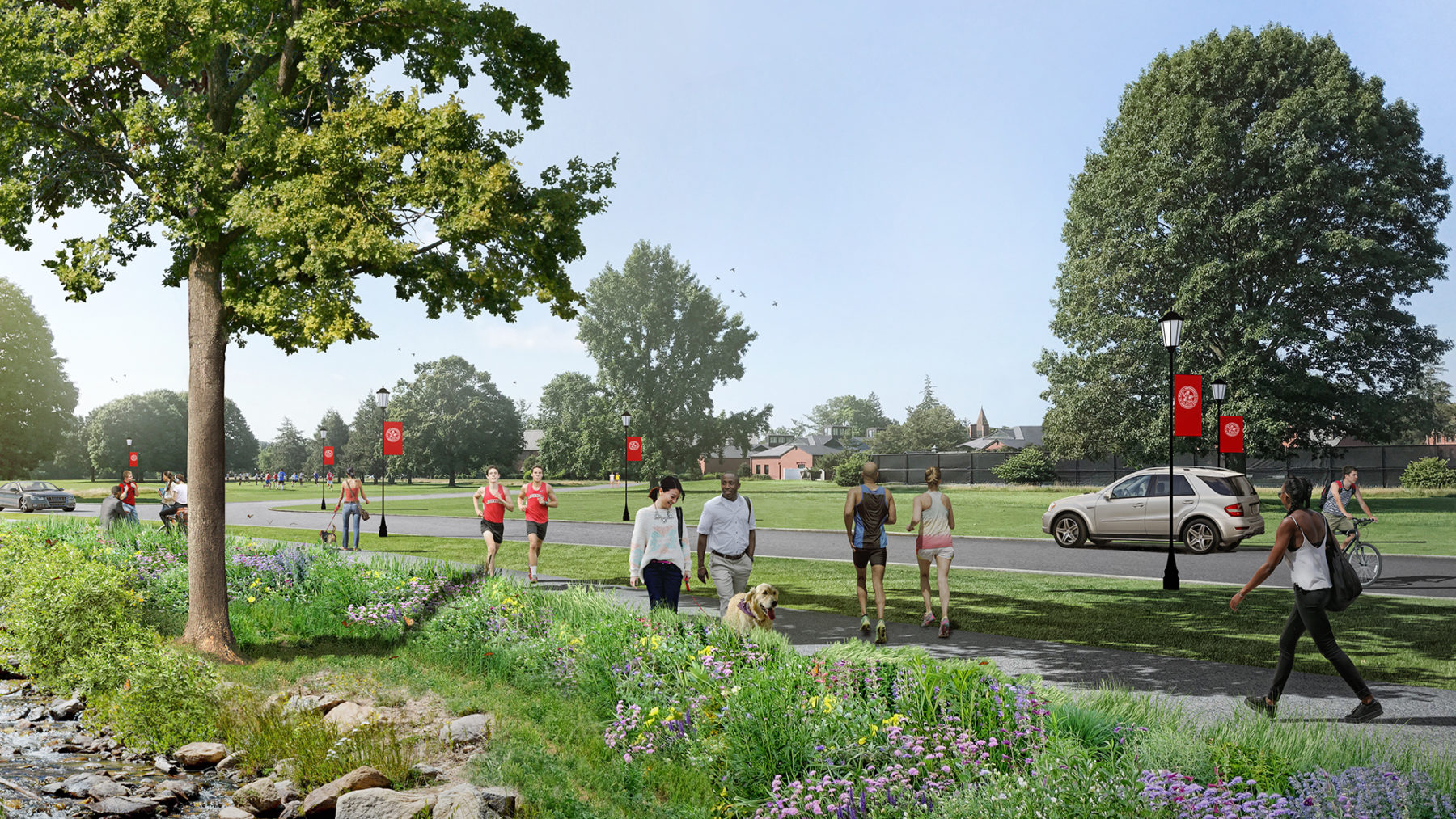
 Sasaki
Sasaki

For the past two years, Sasaki has been working with The Lawrenceville School, a prestigious college preparatory school near Princeton, NJ, to develop a master plan for their historic campus. Earlier this month, Vinicius Gorgati, AIA, LEED AP, principal-in-charge on the project, caught up with the school’s Head Master, Steve Murray, in New Haven, CT.
Moderated by Sasaki’s Communications Manager, Joanna Chow, their discussion focused on the implications of the master plan; opportunities and challenges that independent schools are facing; the importance of design in shaping the student experience, and more.
Read their conversation below, which has been edited for clarity. Illustrations are from the master plan.
A Discussion with The Lawrenceville School’s Steve Murray and Sasaki Principal Vinicius Gorgati
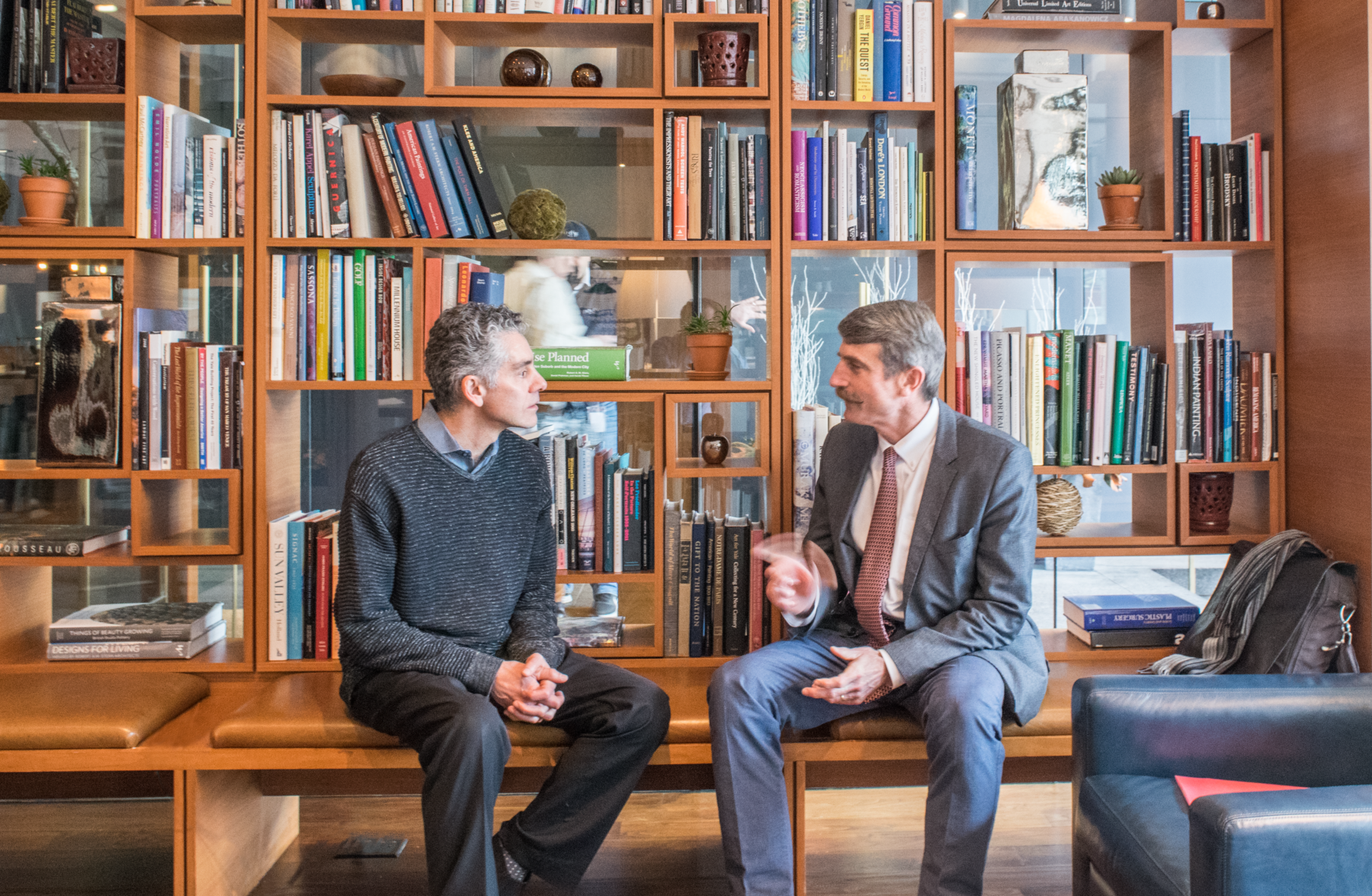
Joanna Chow: With the proliferation of new and different modes of teaching, what do you see as the key and differentiating value of a Lawrenceville education? Especially as the digital age defines how students interact, what role does the physical campus play in their experience?
Steve Murray [pictured above, right]: That’s a very important question, and it’s something that educators like myself are constantly evaluating. The delivery of digital information is useful—it’s obviously had a huge impact on how we learn and engage with one another. There’s no denying that these modes of interaction are here to stay, and they’ll continue to get better.
That being said, there is a vital aspect of the physical campus that cannot be overlooked, and that’s how it shapes human interaction. At Lawrenceville, our mission is “to inspire the best in each to seek the best for all.” Our campus plays a crucial role in that mission. Face-to-face around a Harkness table, you can teach kids to truly listen to one another; that no voice can be marginalized; and that everyone deserves respect. This is a fertile environment for the most important traits we impart to the next generation of leaders: civility, empathy, respect, and accountability to your community. Employing digital tools in our teaching allows us to reach broader audiences, but it is no replacement for unmediated, in-person exchange.
"There is a vital aspect of the physical campus that cannot be overlooked, and that’s how it shapes human interaction."
JC: That close mentorship you mentioned, that’s something of a calling for independent schools, part of the tradition and identity that a lot of schools promote. In your eyes, how do we balance that sense of tradition with the next big things in pedagogy?
SM: Well, sometimes “tradition” comes off as a little stuffy, but that shouldn’t be the intent. If tradition is done right, it shouldn’t communicate “we’ve educated the elite class for centuries”—it should convey that the values of your institution endure. A campus and its buildings should help communicate that continuity. That’s why we build with oak and stone, brass and copper—because these materials endure, just like our values. There’s an old saying, that “great schools don’t stay great standing still.” Schools can improve on their ideas and be more inclusive and broaden their reach. It’s not to say that the previous work is cast out or not worth reflecting on. It just means that we’re constantly improving.
Vinicius Gorgati [pictured above, left]: From an architectural standpoint, Lawrenceville’s campus has a palpable sense of belonging, of invitation. I think of tradition as the DNA of a campus. Pedagogy, administration, and buildings change over time like the traits of children of a new generation, but each still bears a resemblance to what came before.
"I think of tradition as the DNA of a campus. Pedagogy, administration, and buildings change over time... but each still bears a resemblance to what came before."
JC: Let’s meditate on the importance of the campus and buildings a little longer. Lawrenceville’s campus has a historical legacy, as much of its landscape was designed by famed landscape architect Frederick Law Olmsted. How has that legacy impacted the master planning process?
SM: The Olmsted-designed landscape is central to the strong values that we carry on through tradition. Many of Olmsted’s campus plans are defined by large circles at the core, with the buildings placed around the circle, with no individual building towering over the rest. This reinforces the sense of the collective, that no one dominates anyone else. We have a diversity of buildings and precincts that beckons you and offers glimpses of other portions of the campus. You feel like you want to enter each space because you’re coming around the bend and you’re curious. These spatial qualities are emblematic of our learning model: we’re going to intrigue and entice you, draw you into more and more knowledge and conversations.
VG: Olmsted designed the open spaces not only as form, but also living landscapes. His designs are a conversation with the existing environment, creating an intimacy that corresponds with the topography, soil qualities, existing streams, and so on. There is a level of investment and curiosity in designing like that. As we look at how the master plan can help shape the evolution of the landscape, we are considering it through different lenses of time.
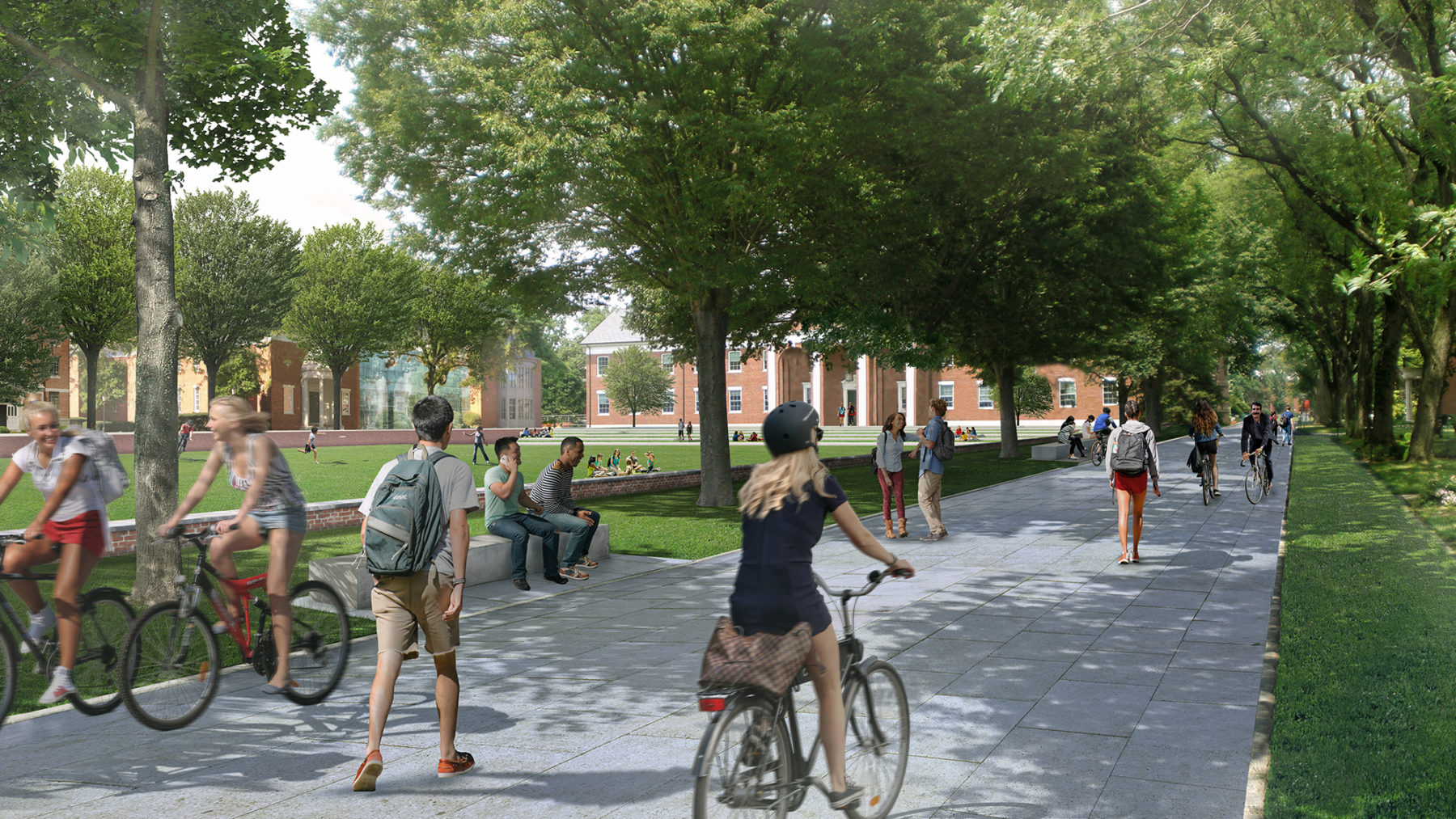
Pedestrianizing the campus’ core will create a safe and vibrant place that promotes serendipitous encounters
For instance, if Olmsted were alive today, how would his mindset translate to 21st century concerns? It’s not about erasing the last several decades and replacing it with native vegetation or creating something bucolic and pastoral; it’s about connectivity, hydrology, ecology—a 21st century sense of stewardship. How can the landscape continually reward students with a sense of curiosity and discovery over the course of their years there, or for instructors who work there for decades?
JC: Let’s turn towards the specifics of the master plan. How do you reposition existing spaces or design new spaces to create the experiences that you want to foster?
SM: That reminds me of a little anecdote. We had some construction on our campus last year that had a pedestrian detour between the classroom buildings and the dining hall. As a result, I had several teachers tell me that on a normal year they wouldn’t meet all students from the incoming class until March or April of an academic year, but that with the construction they knew each new student by name or face by October—just because of this detour. That’s remarkable, but it’s also just a happy accident. So, how can we intentionally create these spaces?
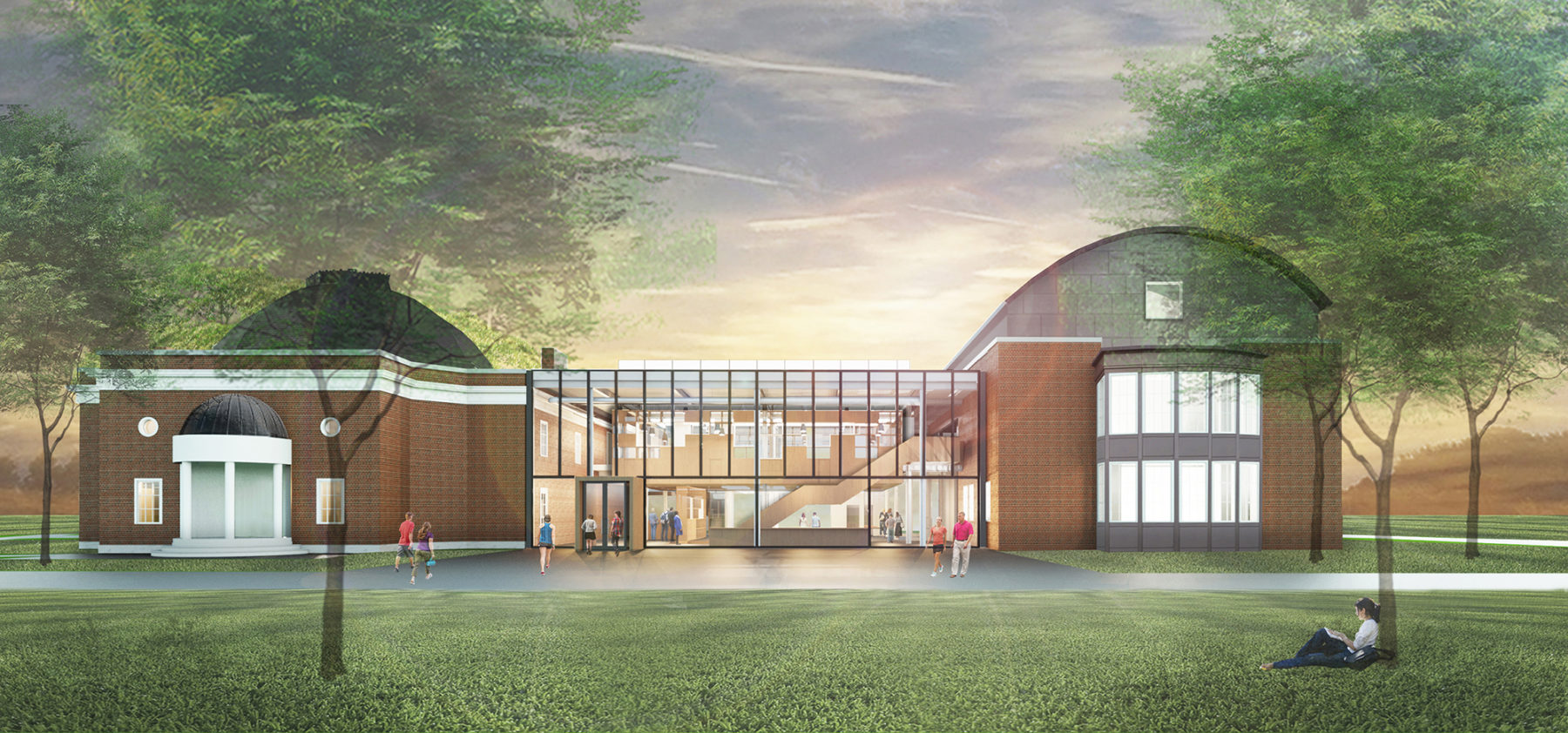
The glass facade of the Gruss Center of Visual Arts addition brings the lushness of the campus’ landscape in while broadcasting the vital energy of the building’s activities out
In my experience that’s where campus planners make a major difference. I really see the value in having someone come in and help you see your space with new eyes. I have faith that opportunities are there, but I have trouble seeing them. What was so thoughtful about Sasaki’s plan for us is that it isn’t just a to-do list—it comes across as a series of opportunities and possible combinations for how to achieve them. It is a very iterative plan—iterative being from the Latin root for journey—to see a series of possible journeys you can take. I think any institution that has a physical campus can drive you together in productive and serendipitous ways. You just have to find a more coherent set of pathways, a more purposeful set of connection points.
JC: How do you balance these opportunities that will change and evolve the feel of the campus with stakeholders, be they students, faculty, or alumni, who hold their memories of campus close to their hearts?
SM: We’ve discussed that a lot over the course of this planning process. It’s true, faculty and graduates often carry a strong sense of connection with their time here. There is nostalgia, as there should be, about the things you care about; the look and feel of buildings and campus; and how you interact with your peers and surroundings. We definitely want our students to have those warm memories. But, as an institution, you don’t want to be necessarily bound by that relationship.
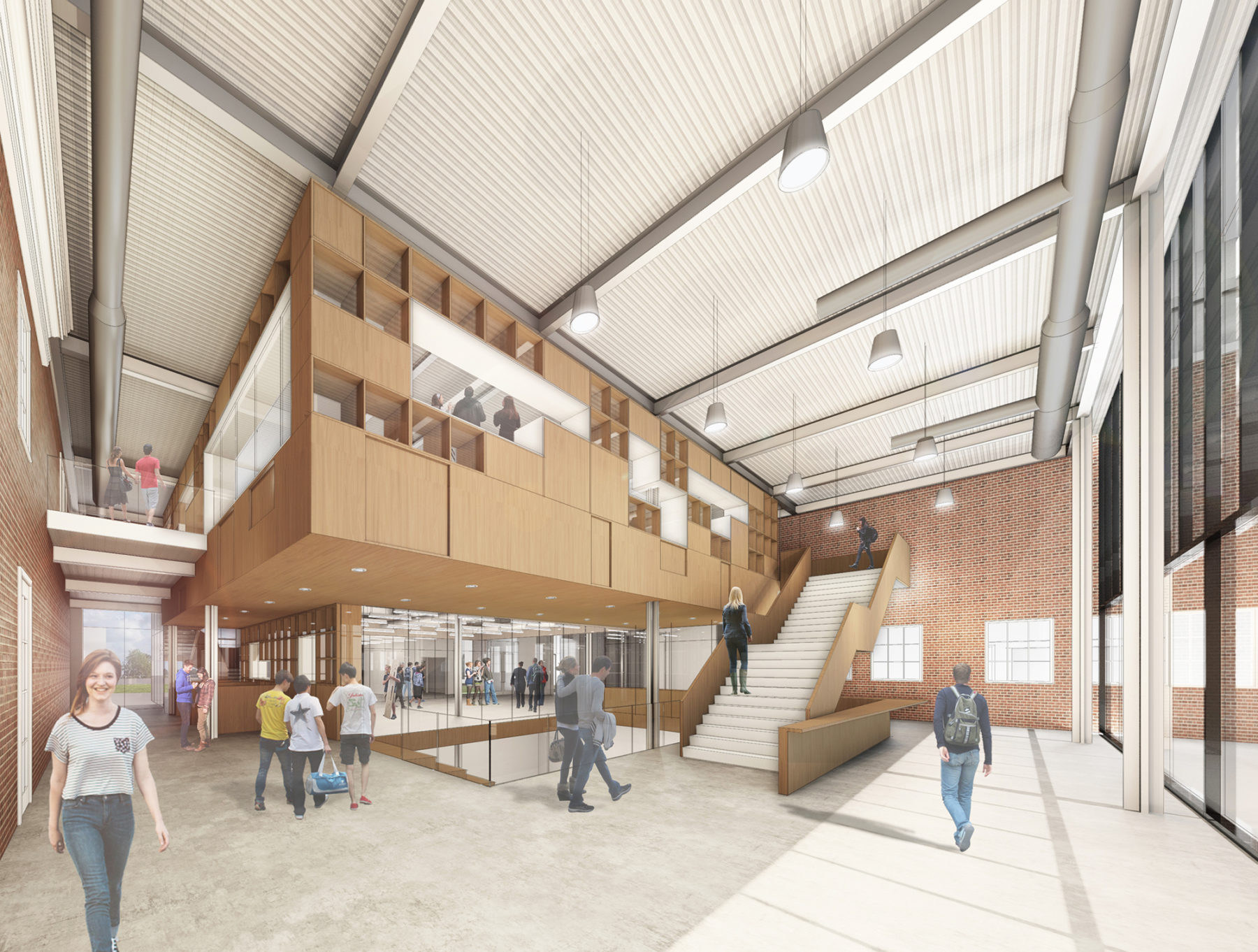
The Gruss Visual Arts Center addition will serve as a beacon for innovation, collaboration and making on campus
VG: This question became an interesting provocation for our work—how do we design spaces that can resonate with parents who may be alumni themselves, while also ensuring that students 15 years from now will have memories that are just as rich and wonderful? Implementing the opportunities laid out in this master plan will help Lawrenceville advance their mission, while enabling them to create new traditions and new nostalgias for the students of tomorrow. That’s healthy for any institution. It shows that though core values remain steadfast, the experience of that campus stays relevant with the times.
JC: When you look at the two years Lawrenceville has been working with Sasaki, are there any moments that were perhaps unexpected, but became emblematic of our work together in shaping this plan?
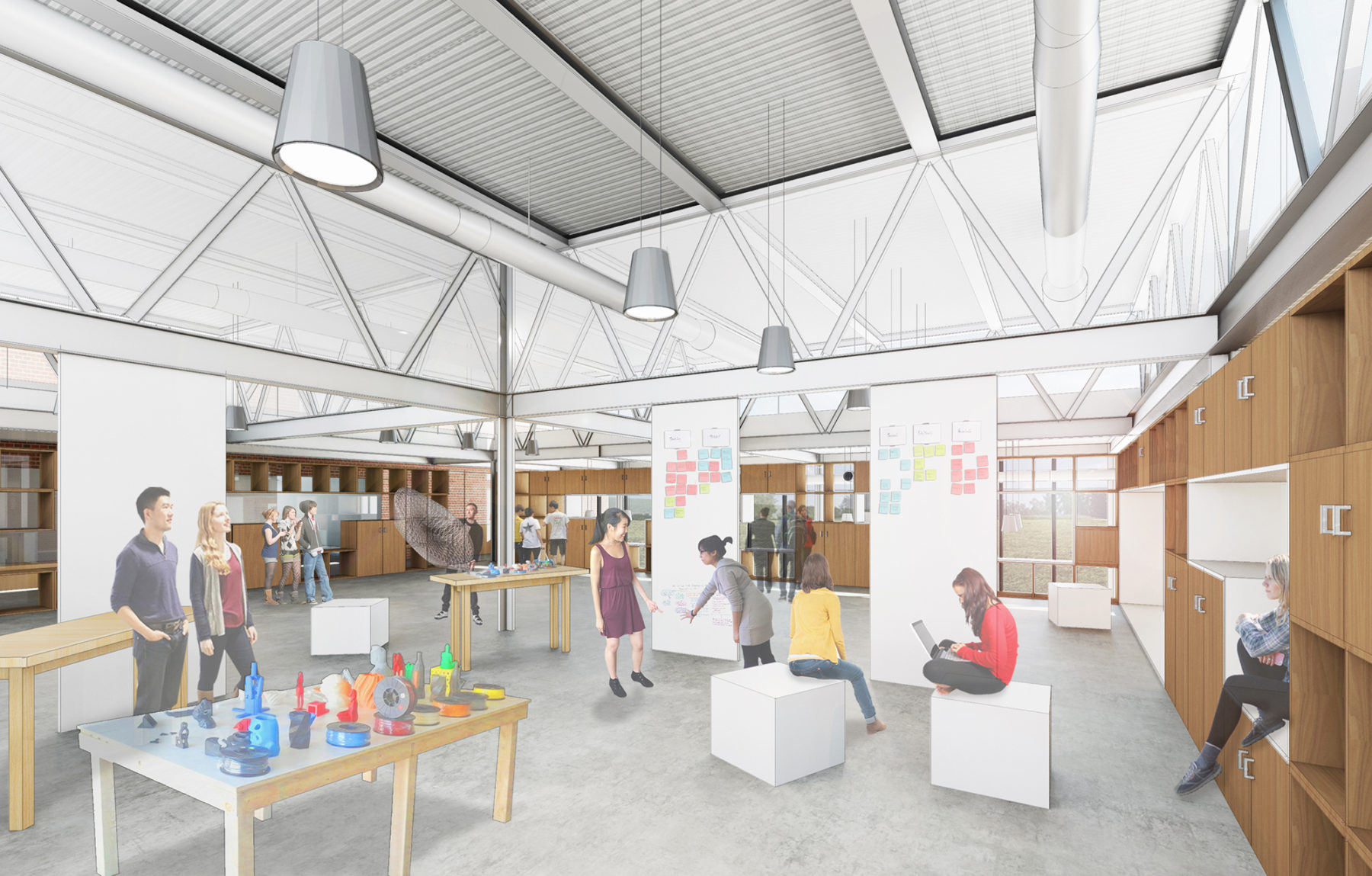
Flexible learning environments will expand manual arts & design and allow for more project-based problem solving
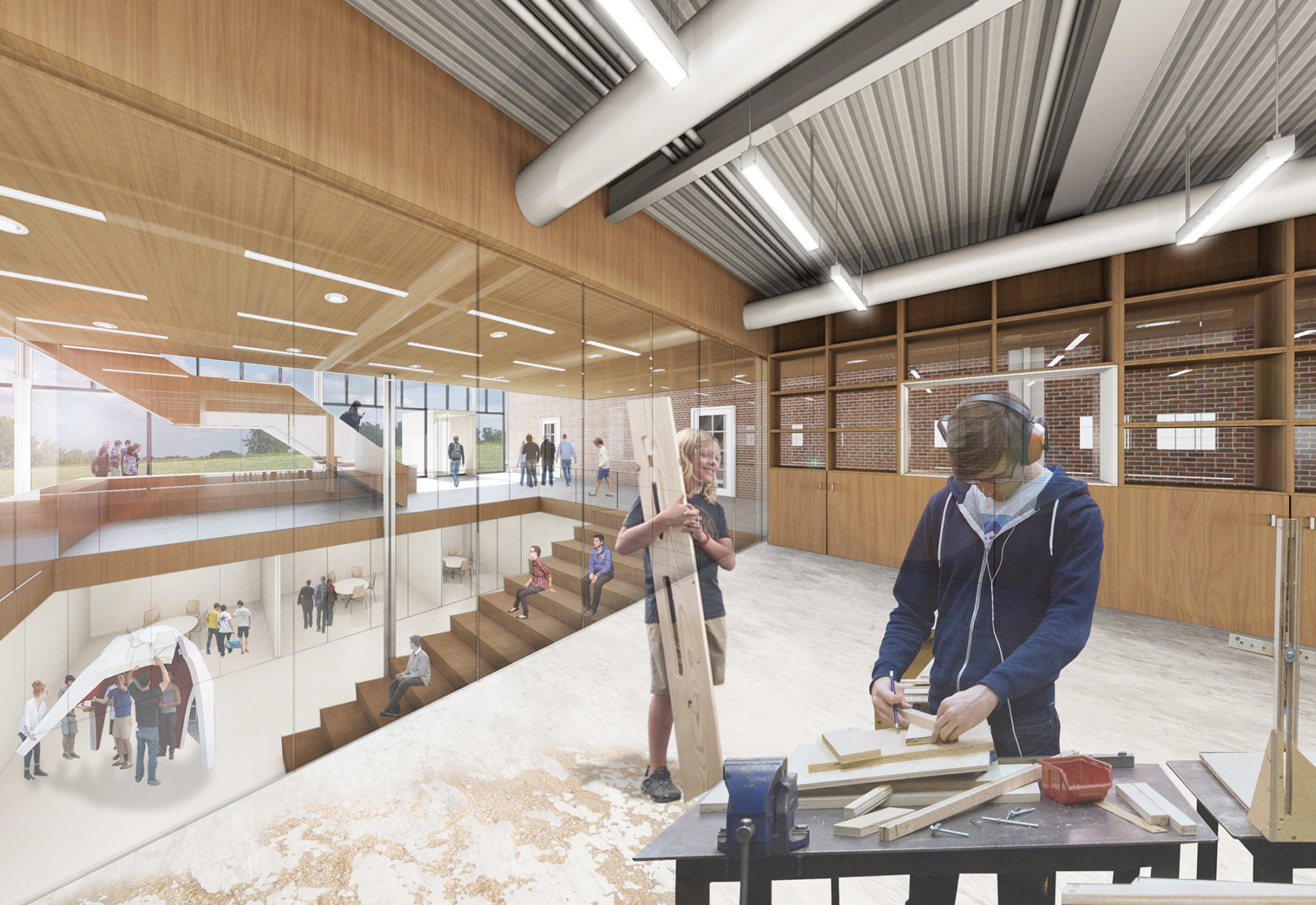
A rendering of the new maker space
SM: You know, we interviewed several good firms for this plan, and the most important element we were looking for was the relationship. That chemistry, how people listen and react to other people in the room. That was one thing that really struck me about Sasaki. It has never felt like you were giving us a lecture—and our workshops have always felt really engaging and productive.
So, the plan that emerged is a product of that collaborative approach. Lawrenceville brings a deep level of knowledge about our school, our values, the ability and willingness to listen. Sasaki brings ideas about what works for other campuses, and a broad understanding of how campuses of all types operate. The mixing of these items worked really well. I was impressed by how quickly Sasaki could understand how our campus ticks, and how you could inform the plan with data without taking away from the art of what you were doing.
VG: That’s great to hear, Steve. We as a firm, and myself as a professional, tend to approach a campus’ issues not from a place of direction and demonstration, but with an approach that relies more on deduction and intuition. When this works well, as we feel it has at Lawrenceville, then everybody is tuned into the same bandwidth and it’s a great engaging relationship.
JC: Last question for you, Steve. What are your hopes for this master plan? What does it mean for Lawrenceville in the near future, and more long-term?
SM: Our strategic plan and this master plan are vital for making sure that our next steps are done right and in the right order. Six or seven years from now, when much of this is finished, the school will be much stronger. But my real hope is that 15 or 20 years from now people will look back and see the things that we were able to do and impact because of the new strategic plan and the campus plan. We’ll be more financially secure, and our campus will have even better environments in which our students will learn and grow.
"Our school sends 200 leaders out into the world every year, and the incremental improvements outlined in the master plan will enrich the education that each of these students receive."
I said to our students when we kicked off this year, that we have a lot of construction and disruptions on the horizon, and I asked the students to think about the time and money we’re investing in the campus. Our school sends 200 leaders out into the world every year, and the incremental improvements outlined in the master plan will enrich the education that each of these students receive. That’s a powerful mission, and we couldn’t be more proud to be contributing to changing the world, one graduating class at a time.
Virtual Reality offers Boston an interactive vision of the new Boston City Hall Plaza, gives clients insight into new arts and dining facilities
Sasaki's newly-designed maker spaces at The Lawrenceville School encourage students to forge creative, hands-on projects, together.